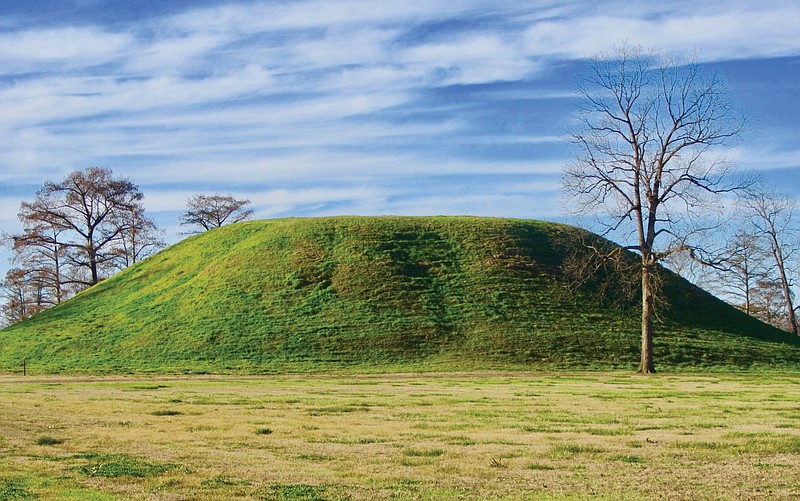The preservation and beautification of the Toltec Mounds Archeological State Park took a step forward last month because of a partnership between the state's Department of Corrections and Department of Parks, Heritage and Tourism.
A regional maintenance crew from the prison system's Tucker Unit completed a critical project at the 100-acre archaeological site, located in Scott, by removing overgrown vegetation from the largest Native American mound at the park.
Park Superintendent Stewart Carlton said the mound is known as Mound A and that its location has created a challenge for the park staff.
"The mound is adjacent to a lake, which creates a maintenance problem when it comes to keeping wooded vegetation off the mound," he said. "We usually mow the mounds, but due to the mound facing the lake, it's a safety risk" because if the mower loses traction, "it could tumble down into the lake. Because of that safety concern, we aren't able to mow it like the rest of the mounds."
Carlton said this means the largest mound in the park will get covered with briars, saplings and vines, and the only way to fix the problem is to hand-cut the vegetation, which is labor intensive.
"My maintenance team is set up for day-to-day operations, but we don't have a lot of extra staff for projects like hand-clearing," he said.
This is where the partnership between the Department of Corrections and the Department of Parks, Heritage and Tourism comes into play.
"We basically had a conversation about what our needs were, and once they understood what we were asking, they came with their leadership and examined the project and agreed to assist," Carlton said.
The clearing took two days, on a Monday and Tuesday when the park was closed.
"We knew that there might be some concern about inmates working at a state park where families come, so we made a strategic decision to do work on Monday and Tuesdays," he said. "This allowed the inmates to do work on the days the public wasn't in the park. We can benefit from them being there, but there was no safety or security concerns."
Carlton said the park is planning to do other projects with the Department of Corrections. He mentioned clearing trees and vines from an ancient embankment wall to allow archaeologists to study the area more easily and to allow visitors to view the site.
"This is a partnership we hope to continue throughout the year and hopefully years to come," he said.
Corrections Secretary Solomon Graves said the department will continue to be a willing partner with local and state organizations such as the Department of Parks, Heritage and Tourism.
"The use of our regional maintenance crews saves tax dollars and builds goodwill in communities across Arkansas," he said in a news release.
Stacy Hurst, secretary of parks, heritage and tourism, said the partnership makes everyone more efficient.
"We appreciate the Department of Corrections and their assistance in doing a job that would have taken our staff several weeks to accomplish," Hurst said in a news release.
The archaeological site, designated a National Historic Landmark in 1978, also benefited from inmate workers in the 1990s, when trees were removed from the mounds.

